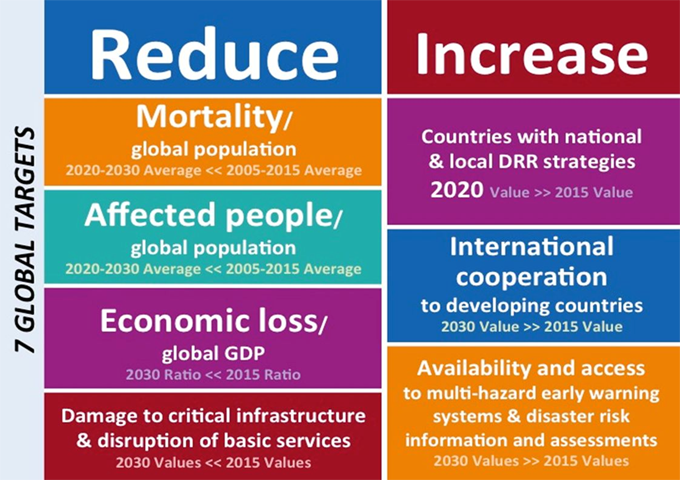Disaster Management Class 03
OVERVIEW OF THE PREVIOUS CLASS (01:07 PM)
PROACTIVE APPROACH TO DISASTER MANAGEMENT (01:15 PM)
- The proactive approach as per the NDMP is shown (Please refer to the diagram shown on the board).
- The response includes rescue and relief.
- The first part of the recovery is rehab.
- Rehab only focuses on shelter, food, and medicinal support.
- Development-integrated disaster management is as per the 'Build Back Better'.
- In the cyclic approach, we are more inclined towards managing risk.
- DRR (Disaster risk reduction) means managing the predisaster part.
EVOLUTION OF THE APPROACHES OF THE DM (01:36 PM)
- 1970s -UNDRO formation (Office of UN Disaster Relief Coordinator)
- 1990-IDNDR (International decade for natural disaster reduction).
- 1994-Yokohama strategy coming from the first DM conference.
- 1999- International strategy for DRR.It continued till 2019, In 2019 it was renamed UNDR (UN Office for Disaster Reduction).
- 2005-Hyogo conference.
- 2015-Sendai framework (2015-30)
- Rest please refer to the flowchart (as shown on the smart board in the class).
CHRONOLOGY OF INTERNATIONAL DEVELOPMENT WITH RESPECT TO DM (02:05 PM)
- Based on the disasters that took place through the 1960s, and 1971 the office of UNDRO was created.
- Based on the experiences of the 1970s, the disaster relief coordinator convened a meeting of the international expert group in 1979 to assess the previous six years' work with respect to risk and vulnerability analysis.
- This work laid the foundation ten years later i.e. 1989 for the UN to declare IDNDR(International Decade for Natural DRR) starting from 1st January 1990 till 31st December 1999.
- GOAL OF IDNDR
- IDNDR was intended to reduce (through international action):
- a)Loss of life
- b)Damage to property
- c)Social and economic disruption (Especially in developing countries)
- IDNDR did lead to increasing awareness globally and led to the adoption of the Yokohama strategy for a safer world in 1994.
YOKOHAMA STRATEGY
- The Yokohama strategy was guidelines for natural disaster prevention, Preparedness, and mitigation.
- This was the first world conference on disaster reduction.
- All the elements of the predisaster were introduced in the Yokohama strategy.
CHRONOLOGY CONTINUES
- 1999- At the conclusion of UN IDNDR the member states determined that UNIDNDR would be succeeded by UNISDR.
- 2005-Second world conference where HYOGO framework for action(2005-15) was adopted focusing on international cooperation to build resilience and ensure DRR is integrated with the development agenda in all member states.
- Simply said the Hyogo framework brings in the concept of integrating the recovery stage with the mitigation stage completing a DM cycle.
- 2015-The third UN conference took place on DRR where the Sendai Framework on DRR 2015-2030 was adopted.
- The Sendai framework has four priorities of action and seven global targets:
- FOUR PRIORITIES
- 1)Understanding disaster risk.
- 2)Strengthening disaster risk governance.
- 3)Investing in DRR for resilience. (Resilience is the outcome of the capacity building)
- 4)Enhancing disaster preparedness for effective response and to "Build back better" in recovery, rehab and reconstruction.
- SEVEN GLOBAL TARGETS

- Simultaneously in 2015, Three more developments happened namely the SDGs, the Paris Agreement, and the New Urban Agenda.
- All of this is now globally expected to be integrated to create a comprehensive systematic risk assessment system or lens that will help us in the future to move towards risk-informed sustainable development.
- In the whole process, Over the last 60 years, the approach for DM has shifted from a hazard waste approach to managing disasters to a systematic risk and system-based approach of managing the risk as elaborated below:
- Please refer to the chart and diagram as shown on the board.
- As we see there is coherence between the five of the Sendai framework global targets and the three goals of the SDG having a total of four parts
- Similarly, the common concerns between the Sendai and the Paris Agreement include Increased frequency and/or intensity of climate-related hazards/Examples: Draught, floods, and storms. (Climatological and meteorological hazards).
- All of this was reflected for the first time in our NDMP 2016 and improvised it in NDMP 2019. In the same year, the UNISDR was rebranded to UNDRR.
CHRONOLOGY OF THE DEVELOPMENT OF THE DM FRAMEWORK IN INDIA (03:21 PM)
- There is no provision for DM in the constitution of India, though recommendations in this regard were made at different times.
- The first such recommendation was made by NCRWC and also by the JC Panth High powered committee to review the disaster mechanism as well as the 2nd ARC. Still, a provision in this regard has not been created.
- With the 1990s declared as IDNDR, The GOI being part of the UN system created a crisis management cell under the Ministry of Agriculture which almost continued till 1999 giving relief in flood and draught cases primarily but the 1999 super Odisha super cyclone raised questions about the efficacy of the DM department under MOA and the high powered committee was set up which had the following major recommendations:
- a)Shift the DM department to the MOHA (Home Affairs Ministry)
- b)Create a provision under the concurrent list of the constitution.
- c)To have a permanent framework for DM and hence create a relevant act incorporating the provisions internationally developed.
- Except for the provision in the constitution, the other two recommendations were accepted and in 2002 the DM department was moved under MOHA, and the National DM Act,2005 came into action.
BEFORE NDM ACT
- Before the NDM cat, The DM in India was an ad-hoc activity, based on the fact that whether the crisis was natural or man-made. The cabinet committee on security and CCMNC was created and headed by the PM. (The two bodies were at the end of the political decision making and the implementation was done by the national crisis management committee.
- The whole approach was reactive or hazard management approach i.e. starts only after the hazard. Once things were normalized, the ad-hoc setup was called off till the next calamity.
POST-DM ACT,2005 (03:58 PM)
- DM Act created an institutional framework:
- NATIONAL LEVEL

- A similar mechanism also exists at the state level.
The topic for the next class:Continuation of the Setup and the Types of Hazard.
1)
Briefly discuss the World Conference on Disaster Risk Reduction a series of United Nations conferences focusing on disaster and climate risk management in the context of sustainable development.(10 Marks/150 Words)
2)
Trace the development of the international effort with respect to the Disaster Management (10 Marks/150 Words)
What are the targets and priority areas under the Sendai Declaration by the year 2030? Discuss the efforts taken in this direction. (10 Marks/150 Words)
(10 marks)




0 Comments